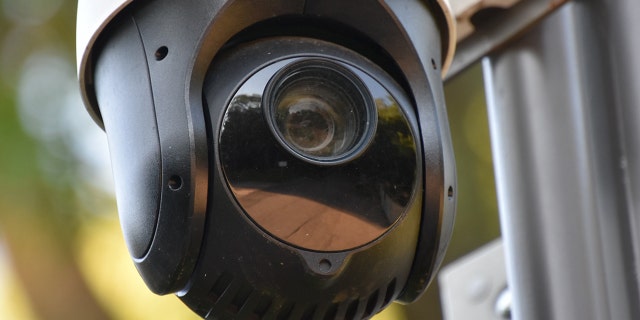It seems like a worst-case scenario from a TV show’s exposé.
You check into your vacation rental and start relaxing, only to find out that the owner of the rental has been tracking your every move since the moment you arrived.
How did this happen? They installed cameras, video cameras, and/or audio recording devices all throughout the rental. Not only has your vacation become an episode of “Big Brother,” but your private, intimate life details and account information every time you order takeout to book an activity reservation is up for grabs.
Now while you may be able to control your own home environment, there are instances where you may have to relinquish your control to others if there is a big job (renovations, fumigation, etc.) being done in your home where people outside your family are coming in and out.
VATICAN WEBSITE TARGETED WITH MULTIPLE HACK ATTEMPTS, ABNORMAL ACCESS
Hacker attacking internet
(iStock)
Many agree a certain amount of paranoia is healthy. (Or you might’ve watched too many episodes of “The X-Files.”) While you may not be a world-class spy with a triple-digit name, it is important to be aware of common spyware that can be used on and around you. See some of the tools of the spy trade by searching the word “spy” at CyberGuy.com. Start by typing CyberGuy in your browser address field to see the real-life spy catcher in action.
Spyware used against you can rob you of your peace of mind, be used as blackmail, compromise, or abuse your personal and financial information.
How spyware can impact your life
So what? Maybe the intention of the end user of the spyware isn’t meant to be malicious, but your privacy is something that should be respected despite the intention. Additionally, if any of the footage or audio recordings caught on these spyware devices get into the wrong hands, it can be a huge embarrassment or risk to your security.
Maybe you’re going through a sensitive time in your life, or you want to relax without the worry of anyone else watching or listening to you. Regardless of why you don’t want spyware floating around the spaces you occupy, we’ll show you how to check for spyware and what products can help protect your privacy from spyware.

Spy camera
(CyberGuy.com)
DIY Ways to Find Spyware
Common sense is an excellent starting place for any endeavor, regardless of the most sophisticated tech at your disposal. If you don’t have the means or desire to invest in specific spyware detection, there are a few DIY steps to finding these stealthy devices.
The main forms of spyware devices include still and video cameras and audio recording devices.
MICROSOFT EXEC SAYS CENSORSHIP IS NOT THE ANSWER TO COMBATING NEW ERA OF FOREIGN THREATS
Turn off the lights and look for any rays of light. Most recording devices emit light, even if it is small
Find the best view. Look in areas where the vantage point will give anyone wanting to spy on you the best views. For instance, you likely won’t find it under the kitchen sink because the cabinet doors will visually obstruct and muffle audio. But you’re likely to find it by ceilings where the whole room can be captured, etc.
Find the connection point. Check your wifi or internet connection as you can usually see what devices are connected to your network — usually, smart devices show up on the wifi network as its own entity (for instance, a smart bulb is usually connected to a wifi network as smartbulbbrand_123)
Find interference. Call someone on your cellphone and slowly walk around the space you suspect has the “bug.” Notice areas of interference (call drops, crackles, or static) — spyware devices often emit a frequency that disrupts calls, etc. You can also use a portable radio that’s tuned to a clear radio station — listen for the same interference listed above.
Look for extra or out-of-the-ordinary objects. Check for toys, wall art, and fixtures that seem excessive or out of place. These items can often double up to house a spyware device.
Use your cellphone as an amateur infrared scanner. Turn off the lights in the room, turn your cellphone camera to front-facing mode, and scan the room, and it should pick up any infrared lights that can’t be seen with the naked eye (you should be able to see it on your phone’s camera as flashing lights).

Man looking into magnifying glass
(CyberGuy.com)
Best spyware detection equipment
Maybe you’re going through a sensitive life period, or you just want to do your due diligence and check new spaces. If the DIY methods listed above don’t cut it, check out the equipment you can purchase to take the spyware discovery process one step further.
Radiofrequency Detectors
Radiofrequency detectors are devices that scan for transmitters (devices, such as spyware, that emit transmissions). While each device varies in sensitivity and methodology, most are usually utilized by slowly moving across spaces or objects that one suspects have spyware. Please note commercial-grade spyware generally falls in the 10 MHz to 8 MHz range.
Amazon Rating 80% of reviewers gave this a 5-star rating
Pros
- Extra sensitive (measures 0.01 to 6.0 V/m)
- Wide frequency range (200 MHz to 8GHz)
- Portable – Small enough to be handheld, carried in bag or placed in a pocket
- Includes soft carrying case, battery, and 2-year warranty
Cons
- Expensive
- Basic interface
Amazon Rating 75% of reviewers gave this a 5-star rating
Pros
- Easy-to-read display has graphics to indicate peaks in frequency levels
- Has built-in flash memory for data logging and downloading data
- Rechargeable device
- Wide range 0-1000 V/m
- Very compact
Cons
- Data downloading is only compatible with a PC
- Only detects frequencies up to 10 GHz
- Expensive
Amazon Rating 79% of reviewers gave this a 5-star rating
Pros
- Easy to read (& large) display with both the numerical reading and graphic bar
- Made in the USA
- 1-year Manufacturer Warranty
- Battery included (9V Alkaline battery with indicator)
Cons
- Expensive
- Frequency Range does not display and only measures 20 MHz – 6 GHz
Nonlinear Junction Detector
Some spyware is built to obscure their own radio frequencies or may have been turned off during your search, which makes the use of RF detectors ineffective. That’s where nonlinear Junction Detectors (NLJD) can be a helpful tool. These devices help detect semi-conductor electronics. But please note, because it is so sensitive, it can alert you of “safe,” non-spyware devices. It’ll mean you’ll have to vet your findings more carefully.
BTFDREEM Hidden Device Detector
Amazon Rating 83% of reviewers gave this a 5-star rating
CLICK HERE TO GET THE FOX NEWS APP
Pros
- Also includes RF & GPS detectors
- Large detection area – 25 square meters
- Good detection range 100 MHz to 8 GHz
- Lightweight and compact
- Infrared sensor can detect infrared light sources in real-time
- Lifetime warranty
- Rechargeable batter
- Moderately priced
Cons
- Display is basic, and you’ll have to rely on sound and vibrational prompts to understand





